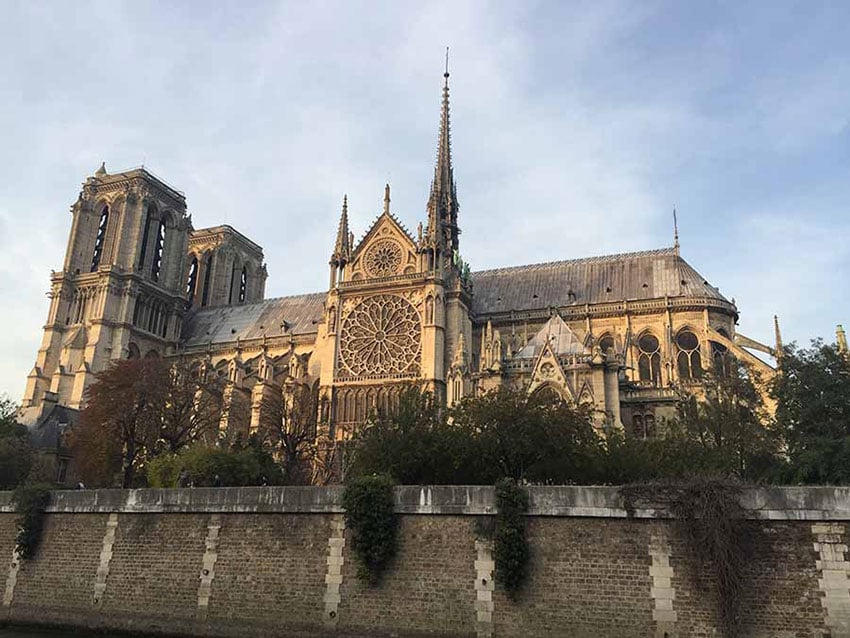
The blackened walls and ashes of Notre Dame carry many memories for Australians, pilgrims and tourists who have visited and prayed in the great cathedral of Paris. Relatives and friends are exchanging recollections in the sad days after the fire.
My first visit of many was in the winter of 1955, as a boy of eleven, leaving one impression, the late medieval image of Our Lady of Paris, to the right of the sanctuary, which survived the flames. On subsequent visits to France, somehow I always found myself there, in the richly tinted gloom of the mother church of a beautiful city.
A Priest at Notre Dame
A canon of the cathedral and assistant dean, aumonier, Fr Brice De Malherbe, is an old friend. I first came to know his parents Armand and Angela in 1984 and I watched their son follow his vocation into the priesthood in Paris, sustained by a remarkable Catholic family. I brought his chalice from Rome for his ordination at the hands of Cardinal Lustiger in Notre Dame in 1995, a magnificent celebration with all the style and reverence of French liturgy at its best, enhanced by fine music.
Related: 8 facts about Notre Dame Cathedral
Dr Brice De Malherbe has emerged as one of the leading Catholic bioethicists in France. His ministry was enriched by work in formation of Paris seminarians. We welcomed him as a visiting lecturer at the John Paul II Institute for Marriage and the Family, Melbourne.
His mother Angela had organized a great Congress for the Family in Paris in 1986, at which Saint Teresa of Kolcata spoke, and I was pleased to work with her team of enthusiastic young people. Angela became the leader of the Billings Ovulation Method movement in France and then the exponent of the innovative Christian education in sexuality program, Teen-Star.
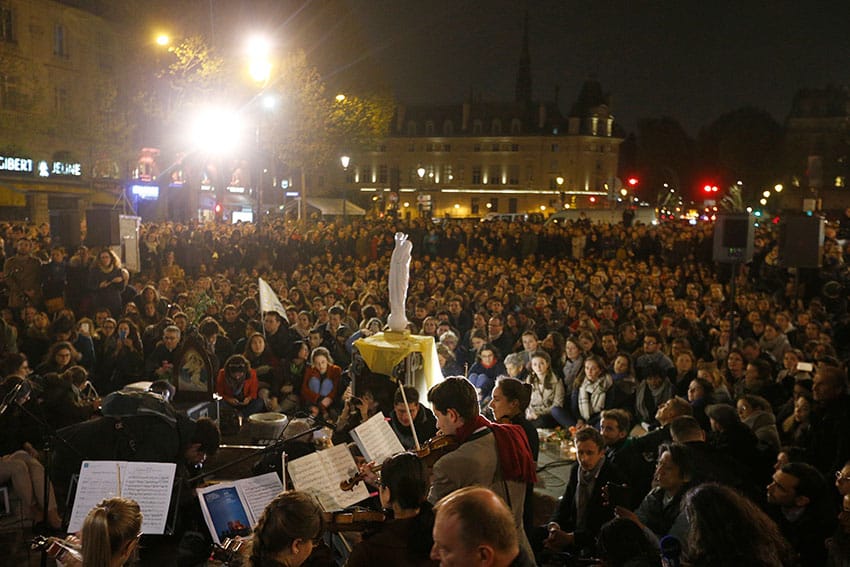
French Catholics on the March
Through this family I have come to know and love French Catholicism—and to witness the Catholic revival that is now well underway in that nation, ‘the first daughter of the Church’. We had a taste of this upsurge of faith when we saw and heard Parisians singing familiar hymns as their beloved cathedral blazed and then moving in processions to the vigil of prayer after the fire—and so many of them were young people.
A few years ago, even greater crowds had gathered around the Eiffel Tower for the Manif pour Tous demonstration, when almost a million people came out against same-sex marriage. That led to a nickname, ‘Les Cathos’, for the rising number of Catholics, many of them young, who are active and outspoken on the social and political front, a phenomenon that confounds a complacent secularist establishment. Yet they represent the surging revival of faith and Christian life in France.
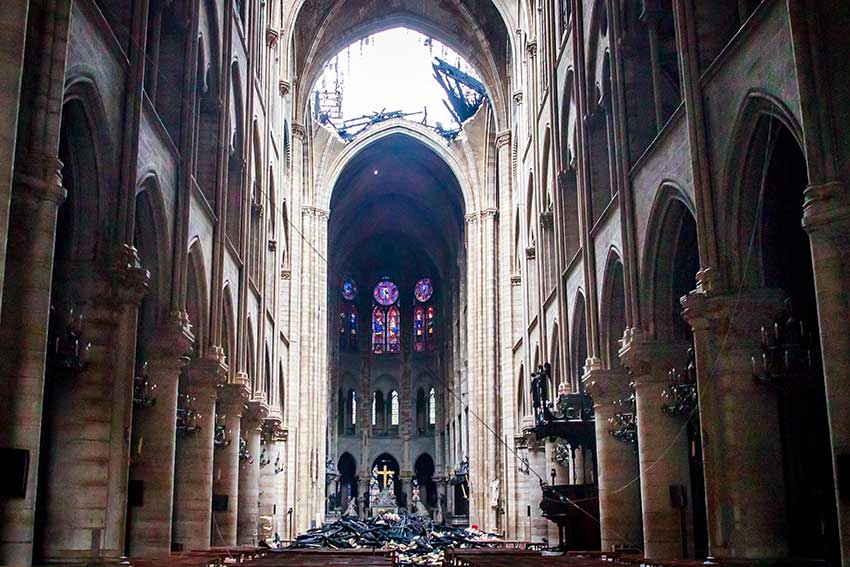
A Turbulent History
Notre Dame embodies the turbulent but creative history of the Catholic people in France. During the French Revolution and brutal persecution under a pagan regime, the cathedral was desecrated. A prostitute was enthroned on the altar as the ‘goddess of reason’. Then, having proclaimed himself Emperor, Napoleon crowned himself in Notre Dame in the presence of a bullied Pope. That ambiguous event is captured in a grand painting by the regime artist, David.
The building was spared during the revolution of 1848 and the Paris Commune of 1870, but two archbishops of Paris, Mons. Affre and Mons. Darboy, were murdered amidst mob violence. Notre Dame survived the First World War, the German Occupation, 1940-1944, and the Marxist student riots in 1968. Now fire has claimed the roof and caused much damage below. The beautiful nineteenth-century fleche, a slender central spire designed by Viollet le Duc, perished, but most of the precious relics were saved. They mean much to French Catholics: the Holy Crown of Thorns of Christ and the tunic of the devout King, Saint Louis IX.
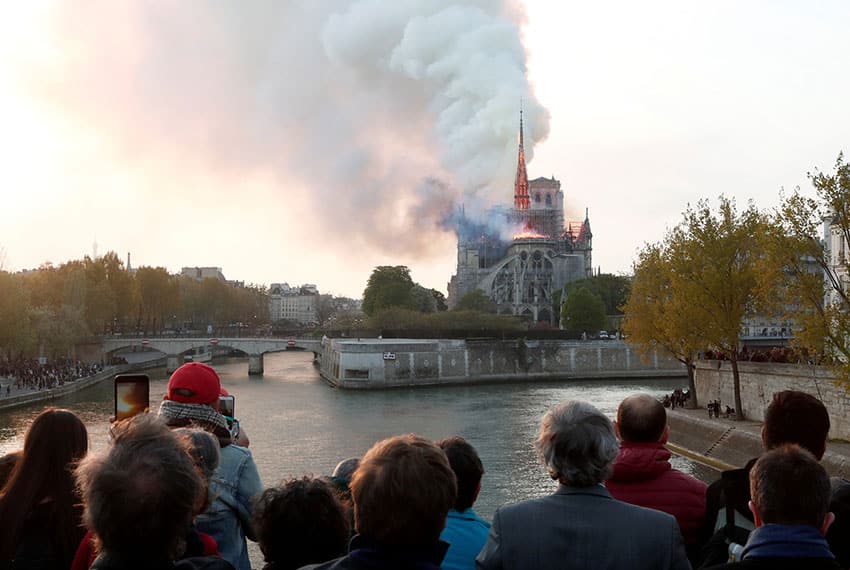
Strong Foundations
The heritage of the past is the foundation for the future. But is not that the way Christians move forward? As a French prelate put it, ‘Our future is tradition…’
This is evident in a remarkable revival of the religious life of women and men, particularly the monastic vocation. The Abbey of Solesmes, one of the original centres of the liturgical movement, is now matched by the new Abbey of Le Barroux near Lyons and the restored Abbey of Fontgombault in Burgundy, not to forget other observant houses of religious women and men. At the same time, a new growing congregation, the Freres de Saint-Jean, combines monastic life with a creative ministry to families. Vocations seem to be rising for the diocesan priesthood, an urgent challenge in rural areas where a priest may find himself in charge of at least six churches.
When we turn to lay initiatives, the Charismatic Renewal has motivated communities, such as Emmanuel and Beatitudes. Marian devotion continues to be shaped by Lourdes and La Salette and by other apparitions known only in France. Saint Jean Vianney and Saint Therese of Lisieux still reach out from the nineteenth century, but in the last century the suffering mystic Marthe Robin motivated many Catholics to commitment for life and the family.
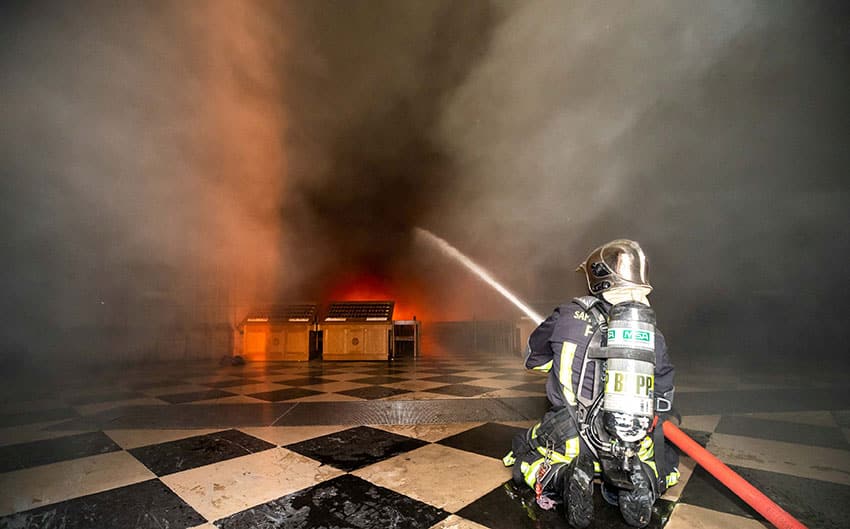
Revived French Spirituality
A spirituality of the cross is inspired by the martyrs of the Revolution, by Saint Charles de Foucauld, the martyr monks in Algeria and more recently by a priest victim, Pere Jacques Hamel. Eucharistic adoration, the divine office and meditation, animate a daily spirituality that once again is warming the hearts of French Catholics, including many children. This work of the Spirit is a phenomenon we should reflect on in light of our forthcoming Plenary Council.
We are told of people returning to Mass and the sacraments, particularly families. A major influence is the traditional Latin Mass, which has a wide following in France, particularly since the provisions made by Pope Benedict. But the French have a particular aptitude for prayerful celebrations of the post-conciliar rite, particularly with good vernacular music, and they love to sing.
So as I reflect on the burning of a great cathedral, I no longer see it as the tragedy some imagine it to be. It was under restoration anyway. But now, that restoration must be deeper, more lasting, more time consuming, more spiritual. Perhaps rising from ashes is a parable of the emerging Catholic revival in France in the twenty-first century, an example for us all.
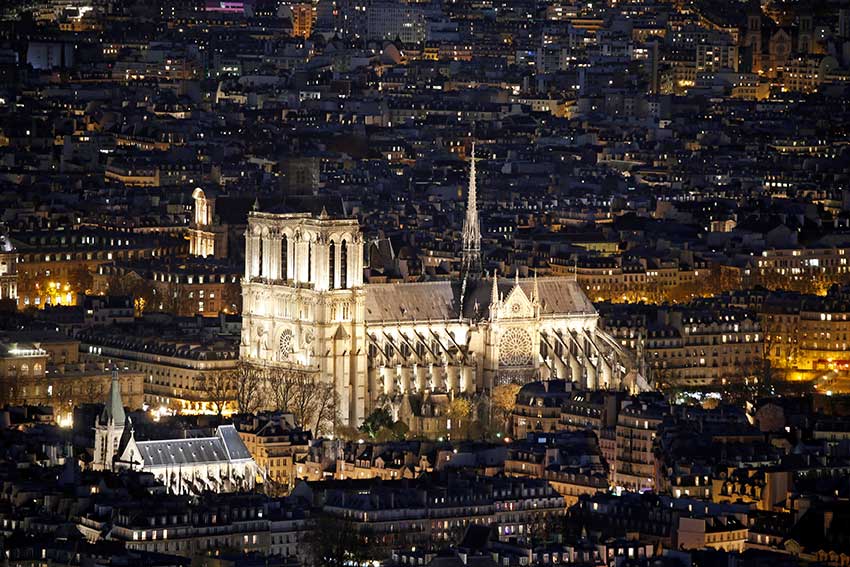
With permission. This article first appeared on www.melbournecatholic.org.au
